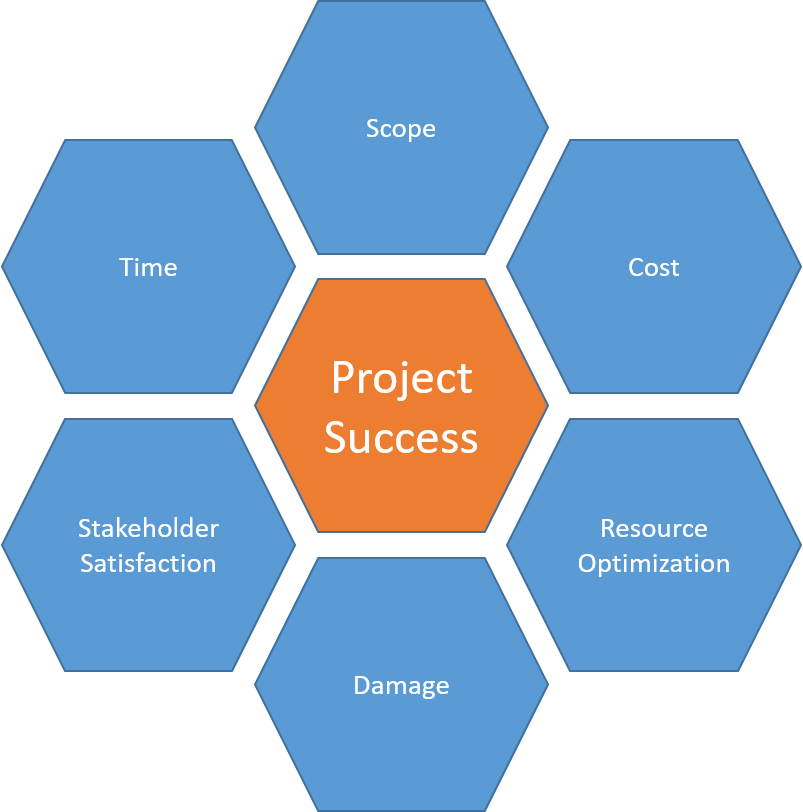Summary
Project objectives are the establishment of requirements which are as quantified as possible and which must be met in order for a project to be considered successfully completed. Conflicts of objectives are to be avoided. An absolute prioritisation of the goals is recommended. In the case of objectives, one must always pay attention to the combination of SMART objectives, completeness of the objectives and, above all, the delimitation of benefit and non-objectives. An absolute prioritisation across all goals in order to be aware of one’s own priorities is helpful. In addition to the magic triangle, the aim is to distinguish between non-targets, benefit targets and now consciously the negative benefit targets as damage and to provide resource planning optimised for all organisations involved.
What are goals and how should they be?
Project objectives are the establishment of requirements that are as quantified as possible and that must be met in order for a project to be regarded as successfully completed. DIN 69901-5:2009-01 defines the project objective as “the totality of individual objectives achieved by the project”.
A complete definition of objectives requires the identification of all relevant stakeholders, which can lead to conflicts of interest. Conflicts of objectives are to be avoided, i.e. the different project objectives must fit together.
The magic triangle defines performance (including quality), costs and deadlines. The magic triangle is supplemented by further dimensions through the six interdependencies.
The goals are to be defined as SMART:
| Specific/Simple | Simple, understandable, concrete |
| Measurable | Operationalized, quantified |
| Achievable/attainable | Achievable, socially accepted, worthwhile |
| Realistic/Relevant | Objectively attainable |
| Timeable/Timely | Concretely planned in terms of time |
Define objectives in a delimited way
Often there is talk of “never-saturated stakeholders”, I have experienced in practice that it helps to have absolute prioritisation across all goals in order to make people aware of their own priorities. In other words, in addition to the must-can-target categorization, a prioritization with a clearer definition of what is the 1st, 2nd, 3rd, 4th, 5th, … x most important goal is recommended.
One must always pay attention with the goals to the combination of SMART goals, completeness of the goals and above all the delimitation of benefit goals (= business benefits/business objectives) and also non-goals. A consideration of these target categories certainly helps to encourage the stakeholders to make a clear statement or to hold on to their expectations in advance, to commit them even better.
The benefit of the project can be defined by the benefit goals of the project. And just as with risks and opportunities, there is a positive and negative sign here. With the “Six Interdependencies” I have consciously chosen the negative sign (i.e. damage here) as the initial viewing angle, as with risk management, in order to deliberately provoke this lighting. In the past, benefits and thus benefit goals were often and well defined by project managers (in contrast to their performance goals).
Social goals
In my opinion, an example of “training on the job” within the framework of the project is a good example of a social goal that can be well defined in terms of objectives, provided that “training on the job” takes place during the course of the project. If, on the other hand, this “training on the job” takes place in the follow-up of the project on the basis of the use of the project object (e.g. use of the implemented software in everyday operations after the end of the project), it is a clear benefit goal and must also be defined as such. If, on the other hand, the training is essential for the implementation of the project, it is a performance goal, because otherwise the object of performance will not be completed or achieved.
Goals in the playing field of the Six Interdependencies
The supplemented interdependencies help my perception according to the clear definition of the project object and the demarcation by the use of this and the well definition of the basic conditions (context determination) in the framework of resources, damage and stakeholder satisfaction.
In my opinion, the Six Interdependencies bring more to light the things that have so far been defined, in part neglected, on the edge, next to the magic triangle, by benefit goals, resource planning (but so far only with the focus on the project and not as is now the case with the Six Interdependencies of the entire (parent) organization(s) involved). In practice, I have already achieved positive, more conscious and more complete goal definitions and delimitations. Thus the six interdependencies show all known practice-proven project methodical aids like magic triangle, in addition delimitation of not goals and use goals and now consciously the negative use goals as damage, conscious restriction of the resources and however not only for the project (as it happens classically with the resource planning primarily), but also for all organizations involved an optimized resource planning.
Thus, the Six Interdependencies are a combination of already known, previously independently considered influences and now additional consideration of damage and cross-organizational resource consideration together:

